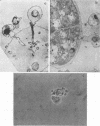Abstract
In a high-rate oxidation pond, 0.1 to 1.0% of the algal population of Scenedesmus obliquus was found to be infected by a chytrid. When suitable conditions developed, these infections burst into massive epidemics that killed most of the algae. The major factors triggering massive infections were optimal oxygen concentration and low concentrations of potassium and magnesium cations. The fungicide Benomyl was effective in preventing infection at a concentration of 1 mg/liter.
Full text
PDF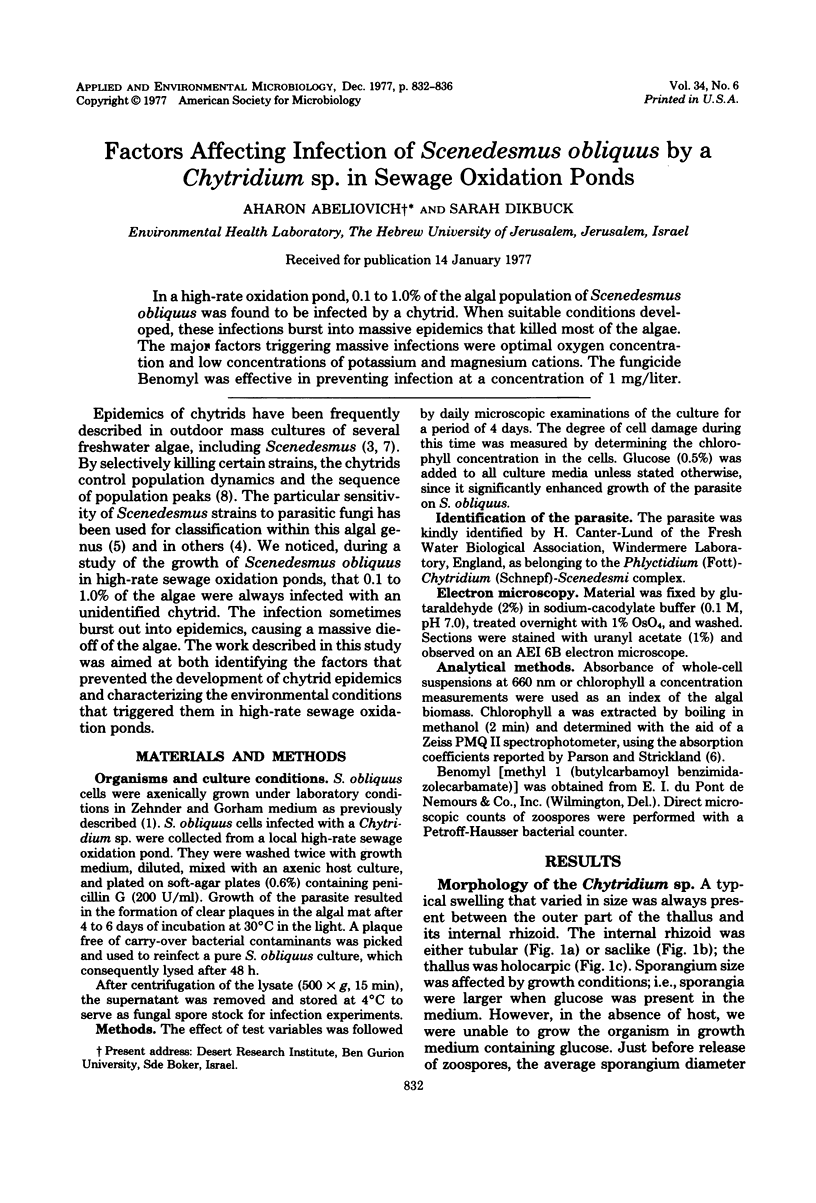

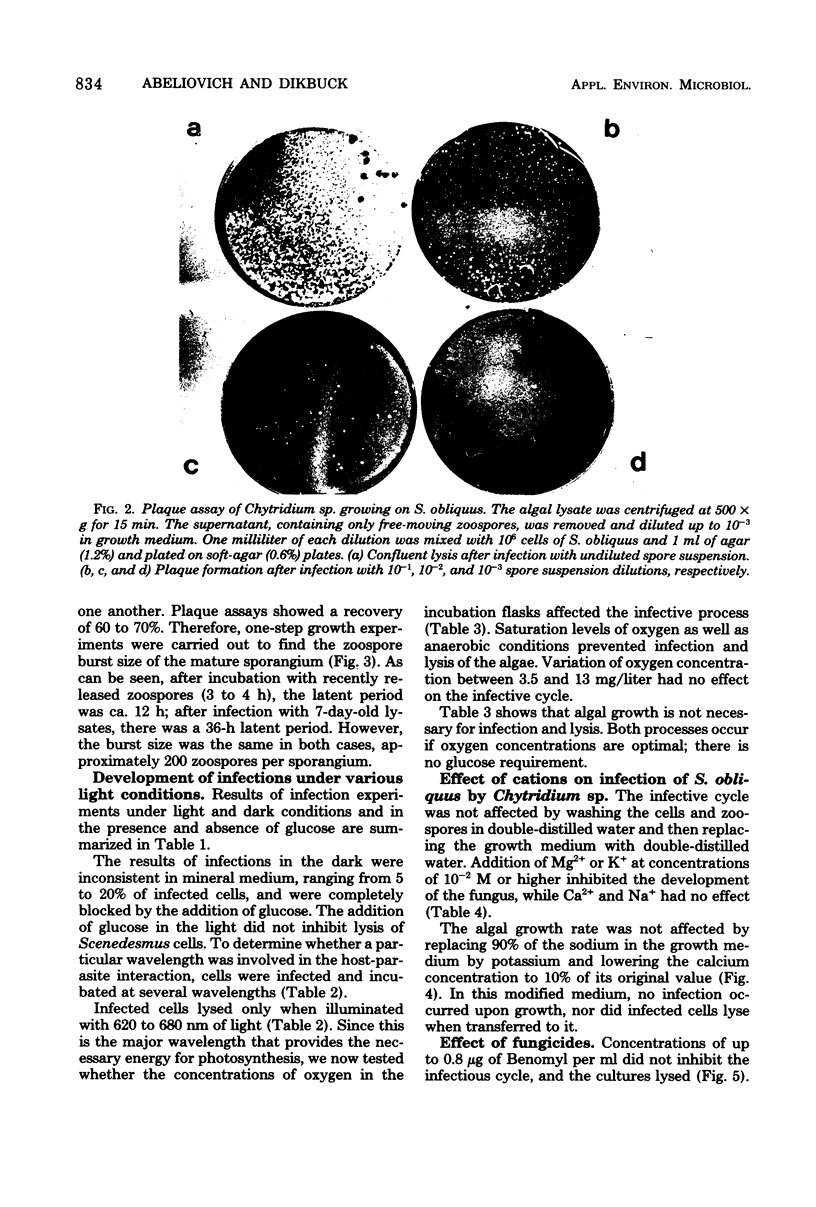
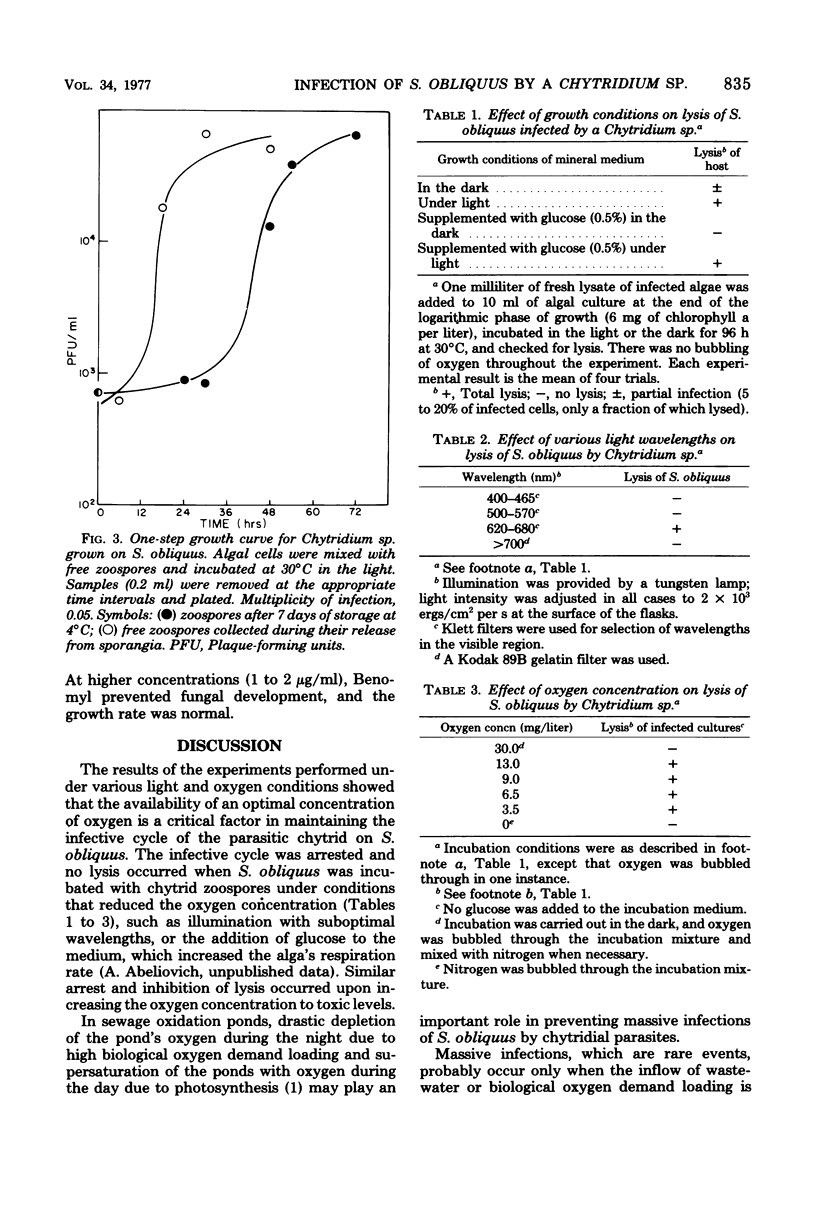
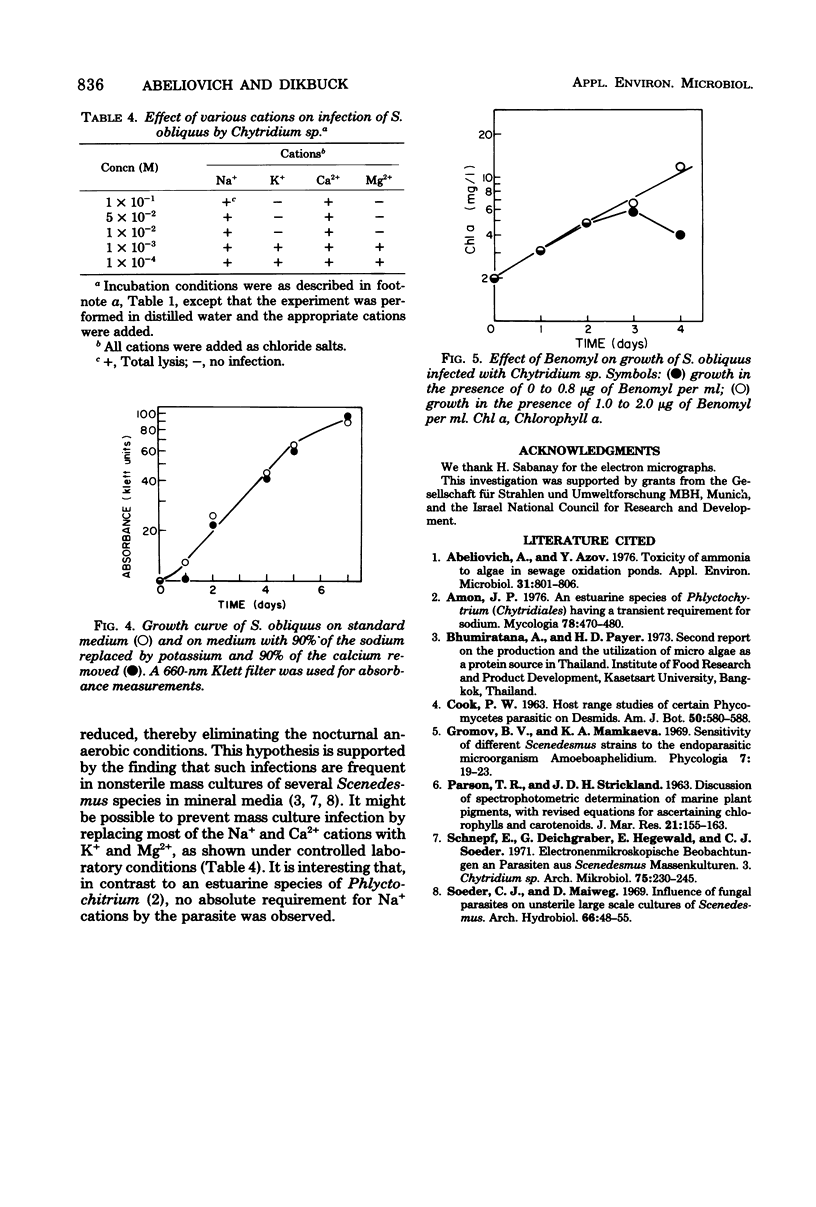
Images in this article
Selected References
These references are in PubMed. This may not be the complete list of references from this article.
- Abeliovich A., Azov Y. Toxicity of ammonia to algae in sewage oxidation ponds. Appl Environ Microbiol. 1976 Jun;31(6):801–806. doi: 10.1128/aem.31.6.801-806.1976. [DOI] [PMC free article] [PubMed] [Google Scholar]



